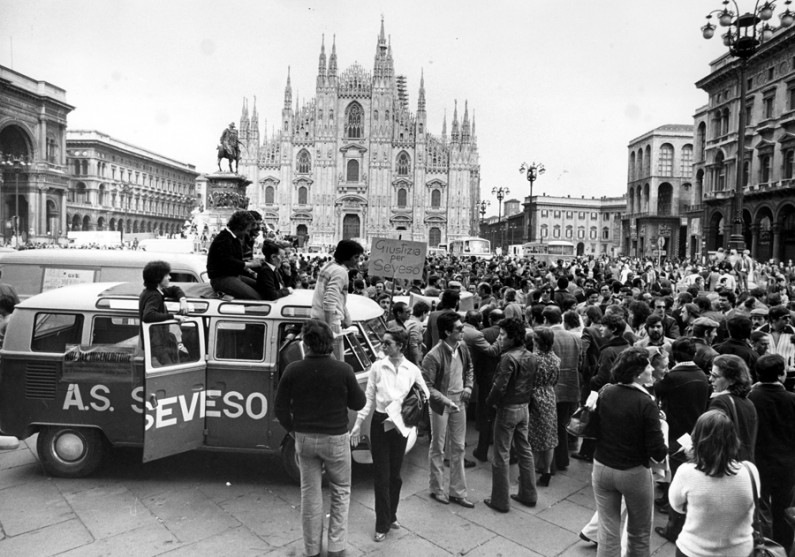
The incident of 10 July 1976 upset the daily lives of thousands of people. The name, Seveso, became sadly famous. During their travels within Italy and abroad, the Seveso citizens were regarded with suspicion and the local products rejected, as if they could spread dioxin everywhere.
More
Many women were confronted with the dilemma of whether or not to abort, without any certainty of knowing if the dioxin could effectively be hazardous for the newborns. It was a dramatic decision to make, also because of the difficult atmosphere brought about by the instrumental exploitation of the event in the controversial issue of legalizing abortion, which came about later in 1978.
The community, however, did not disunite. The women and men got together in spontaneous committees, groups and associations. The regional parishes played an important role, groups formed (remember the slogan, “In Seveso life goes on”), and there were numerous volunteer initiatives and the people’s technical scientific committee.
Discussions ensued also because of the ideological implications aroused by the event and the decisions to be made. The divergent viewpoints that enlivened the committees, groups and citizens brought out many experiences in environmental education and healthcare, information, scientific research and social action, that allowed the community to stay alive and united even in conflicts, though tragic and in the great uncertainty provoked by the novelty of the situation.
Tens of thousands of citizens opposed the decision of the Region of Lombardy to build an incinerator in Seveso, for the elimination of polluted material. Luckily and wisely, the decision to build the oven was abandoned, also due to the pressure exerted by the people. The men and women of Seveso had the strength to respond positively to the “drama of the unknown” caused by the incident on 10 July 1976 and precisely due to this, the entire story has become today, a “HYMN TO LIFE.”

